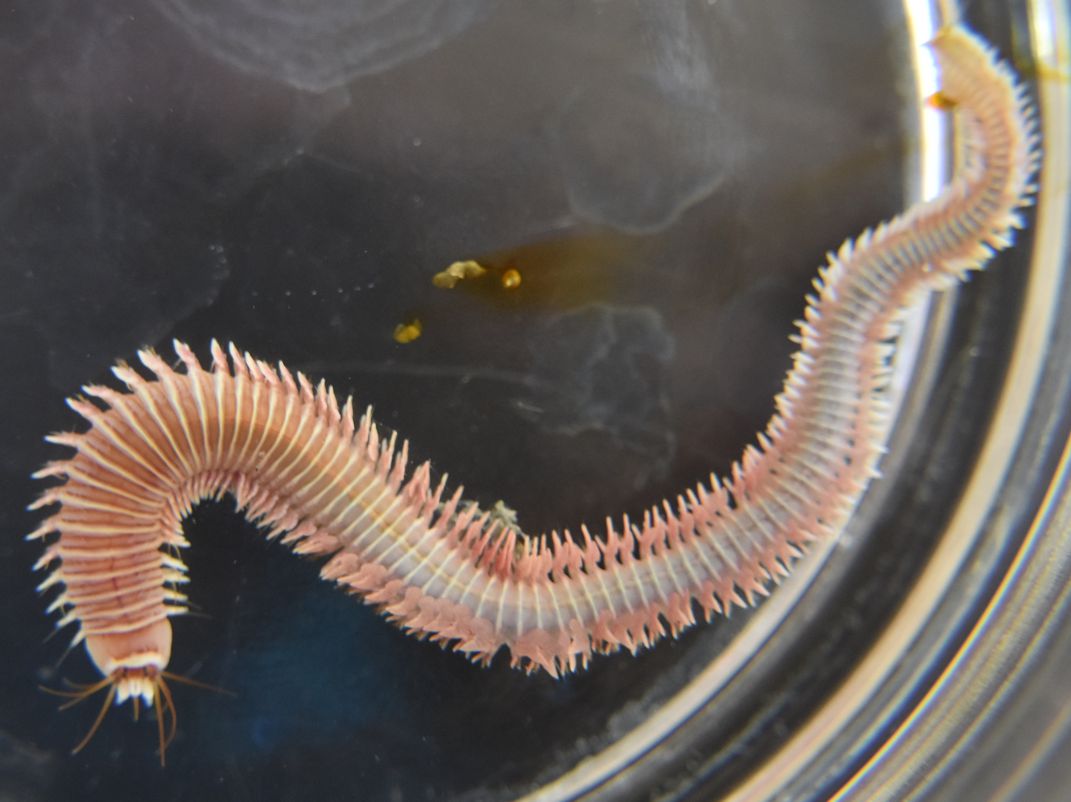Description: Nereid worms (ragworms or clamworms, Family Nerididae) are motile polychaete worms. Their prostomium has a pair of palps which are differentiated into two units, the proximal of which is larger than the distal. They also usually have two prostomial antennae. The peristomium is fused with the first body segment, and usually has 2 pairs of tentacular cirri. The pharynx is eversible and has two regions. The distal region has one pair of strong jaws (photo). Varying numbers of scattered conical teeth (paragnaths) may be on both the distal and proximal regions of the pharynx (photo). The first body segment has 1-2 pairs of tentacular cirri which do not have aciculae. Some of the setae are compound. The notopodia are usually well-developed with flattened lobes. The notosetae are compound falcigers and/or spinigers (or rarely are absent). Most genera have no gills, but if gills are present they are typically branched and on some of the mid-sections of the body. Most are omnivores but some are active predators. They are semelparous (reproduce only once) and usually use epitokes for breeding. This species (Cheilonereis cyclurus) is a commensal with large hermit crabs and has a unique enlarged collar-like extension of the peristomium which extends around the base of the prostomium. It also has prominent white and red or pink trnasverse bands. Length to 18 cm.
How to Distinguish from Similar Species: No other nereid worm (sea-nymph) has the distinctive collar on the peristomium. This appears currently to be the only species in its genus.
Geographical Range: Northern Alaska to southern California; NW Pacific
Depth Range: Intertidal and subtidal
Habitat: Commensal with hermit crabs
Biology/Natural
History: This species
lives commensally with large hermit crabs
| Return to: | |||
| Main Page | Alphabetic Index | Systematic Index | Glossary |
References:
Dichotomous Keys:Carlton, 2007
Kozloff, 1987, 1996
General References:
Ricketts
et al., 1985
Scientific Articles:
Web sites:
General Notes and
Observations: Locations, abundances,
unusual behaviors:
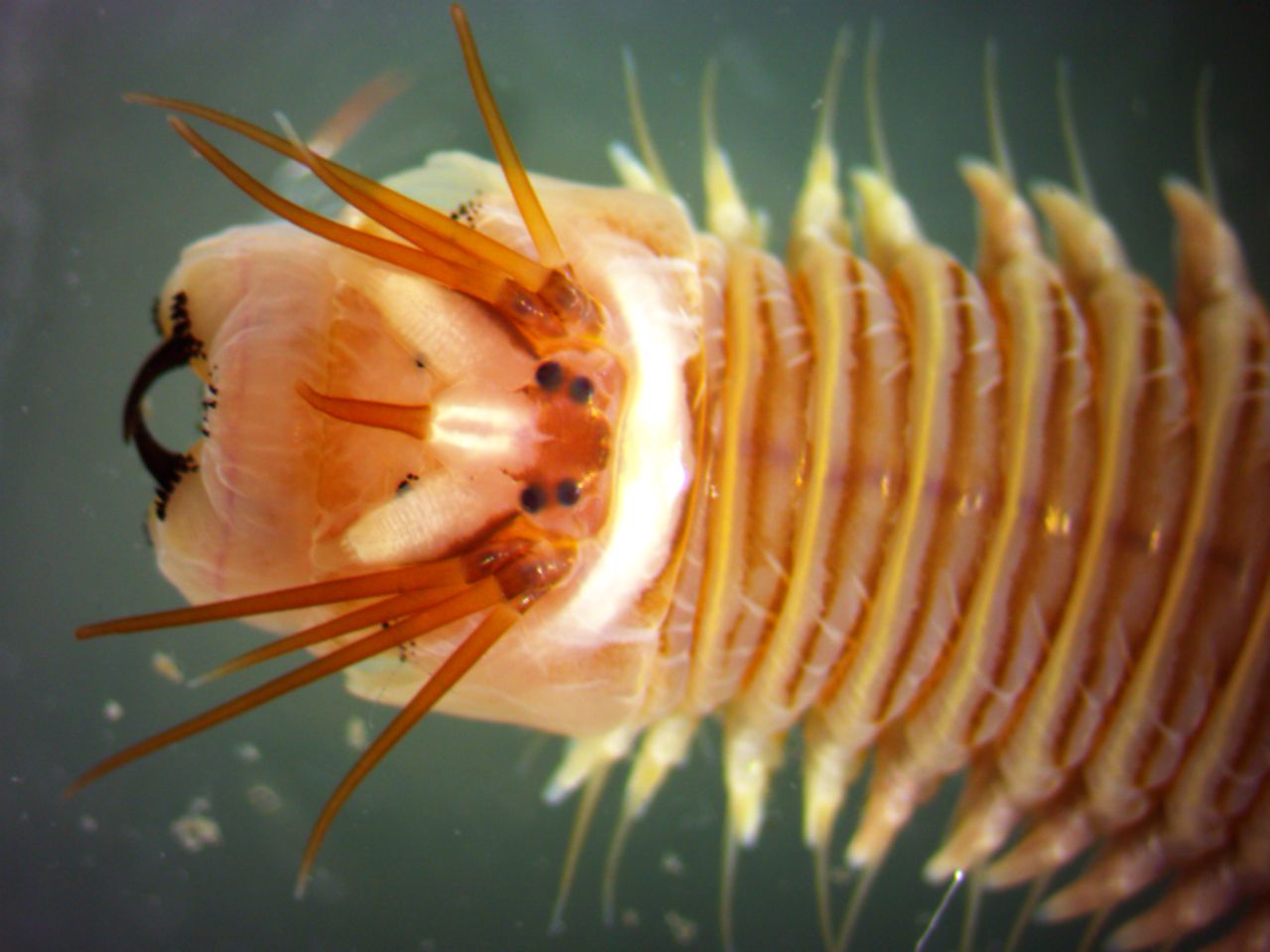
Dorsal view of the head, with eyes and 4 pairs of tentacular
cirri on the prostomium.
The pharynx
with its
anterior jaws and conical paragnaths
can be seen partly everted from the peristomium
ventral to the prostomium.
Photo by Dave Cowles, July 2018.
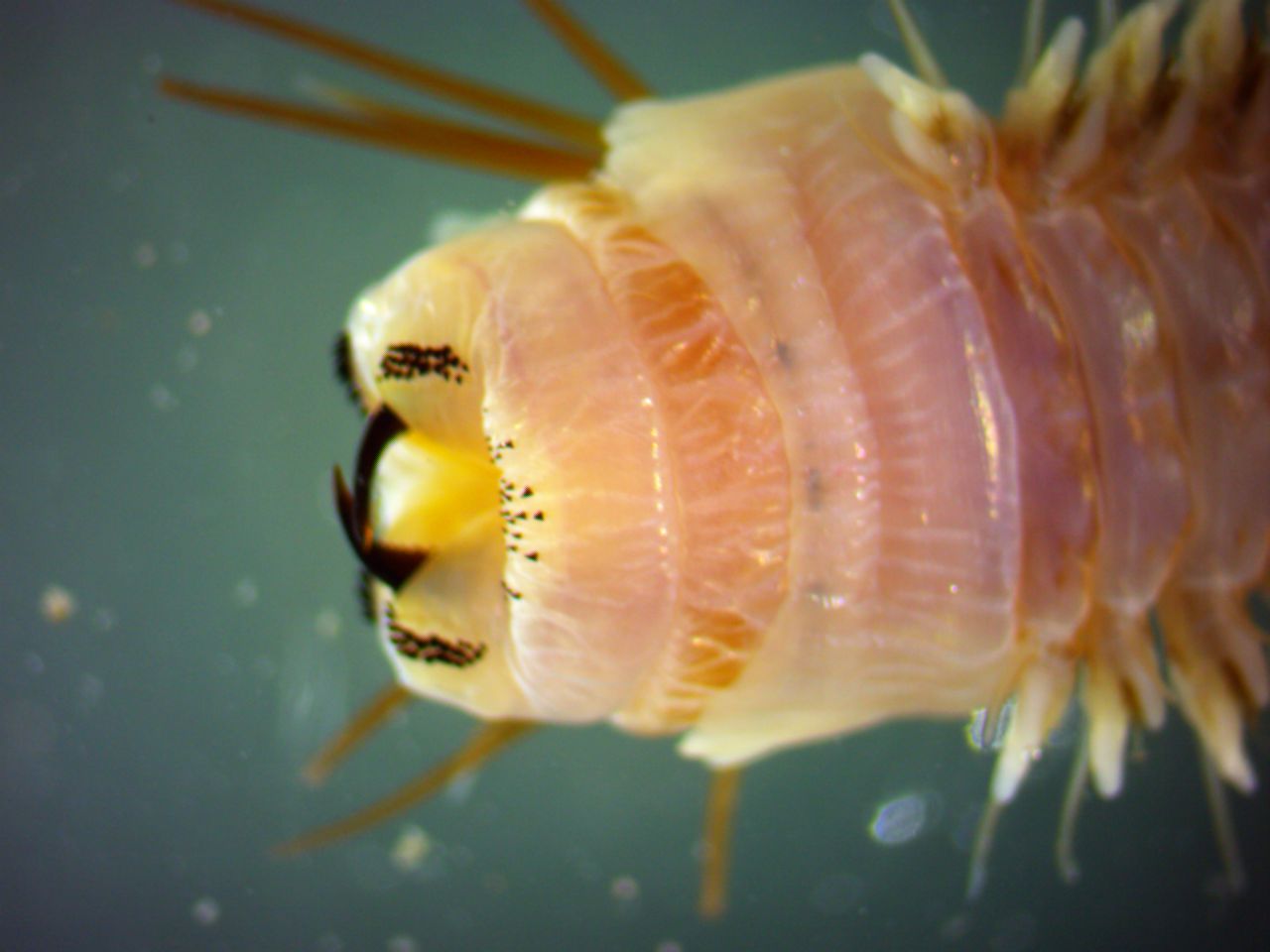
This ventral view of the head shows the slightly everted pharynx
with the distal
jaws
and paragnaths
and
rows of proximal paragnaths.
Photo by Dave Cowles, July 2018
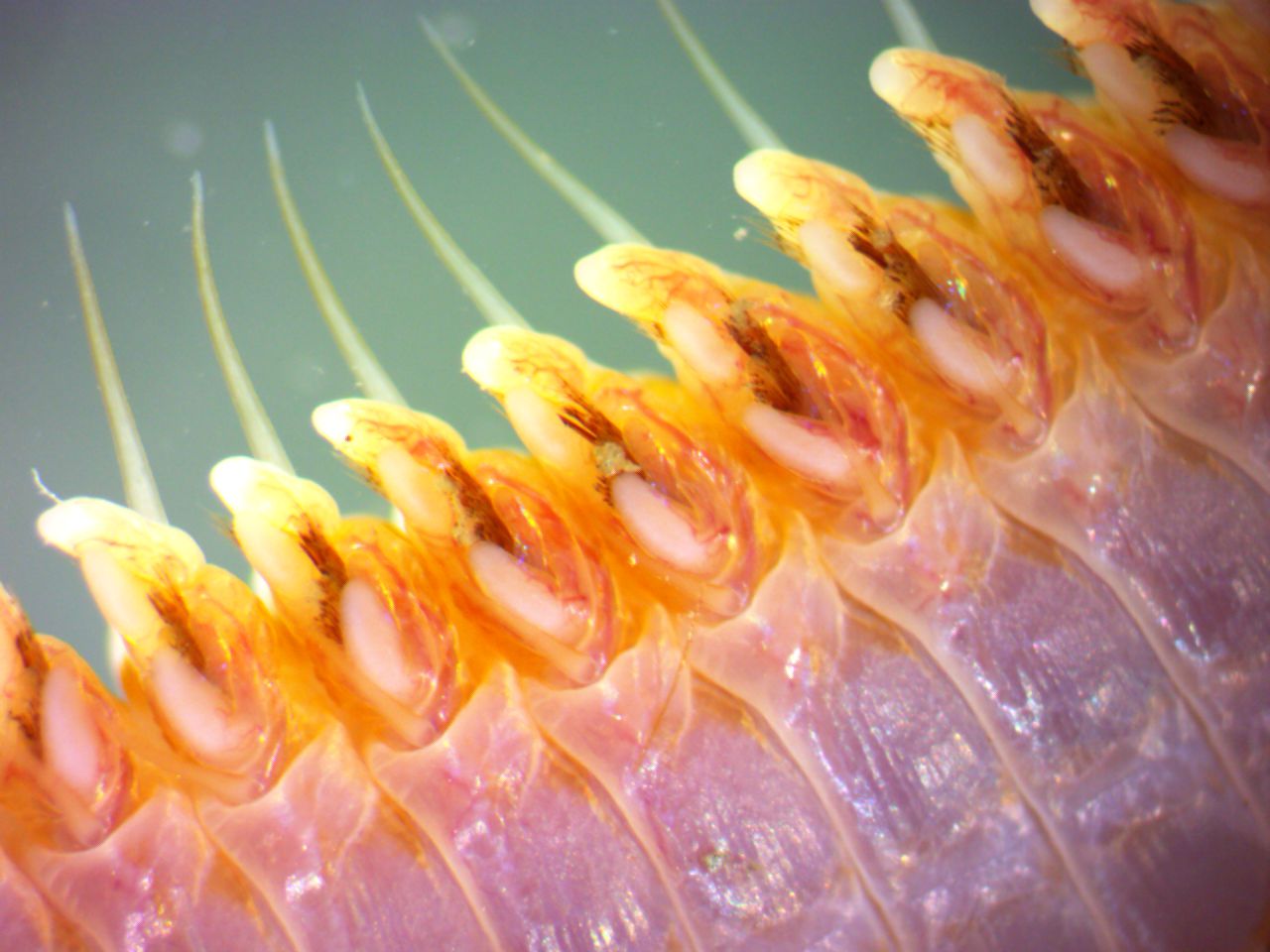
This ventral view shows the parapodia
with the rounded posterior lobe .
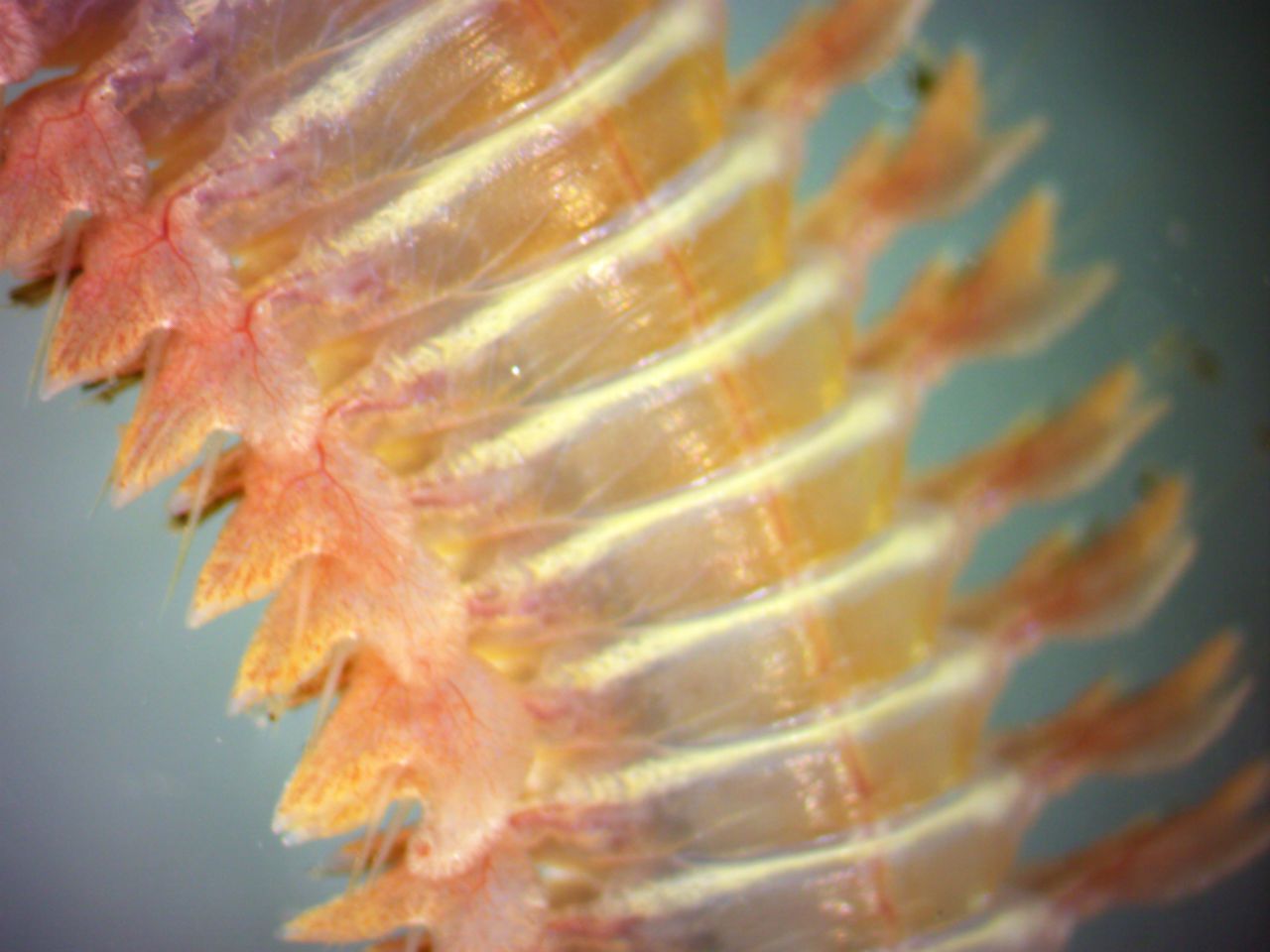
In this dorsal view the blood can be seen circulating through the parapodia.
Note also the long, leaflike dorsal ligules.
Photo by Dave Cowles, July 2018
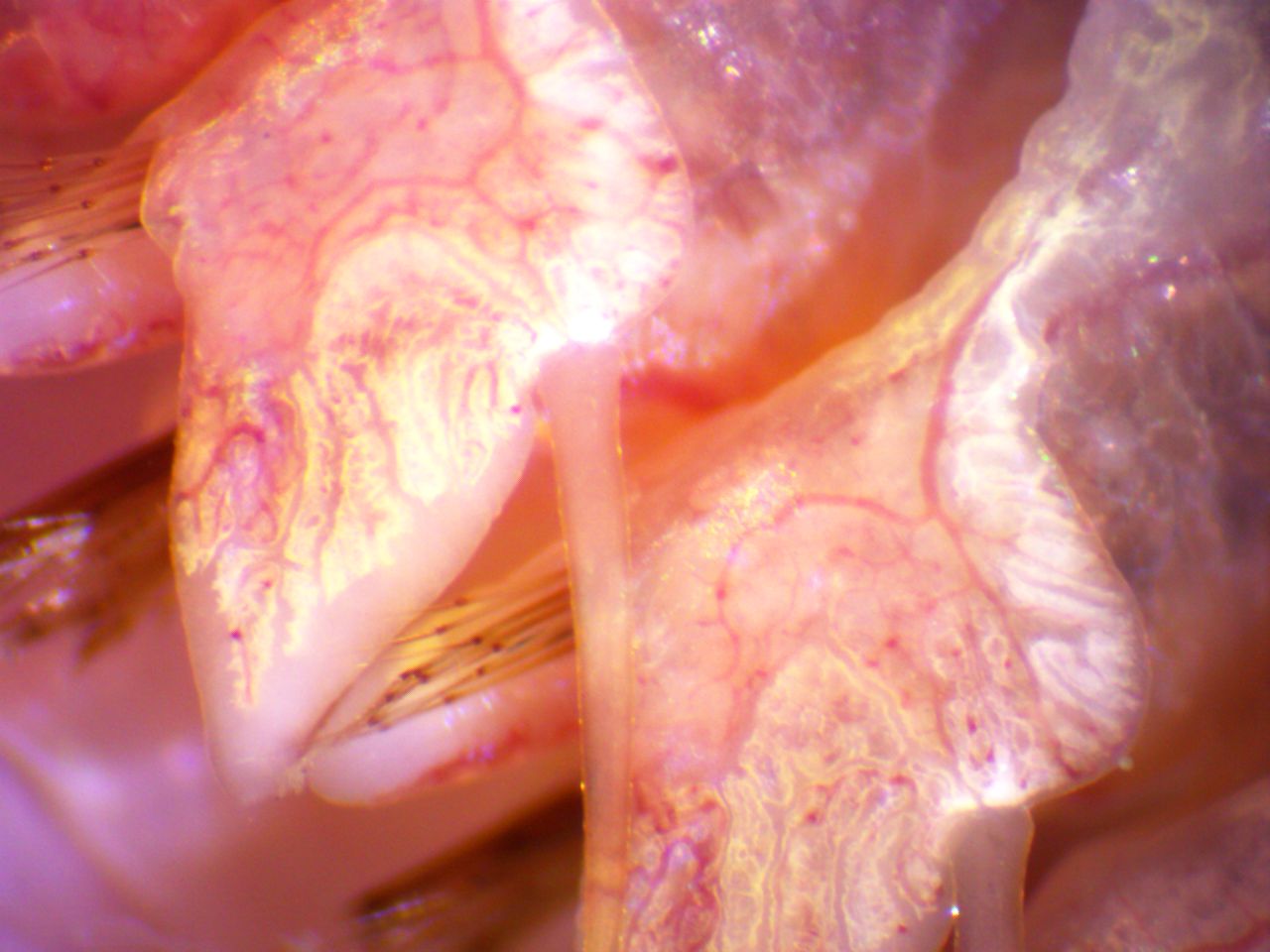
This close-up dorsal view of the parapodium
clearly shows the blood circulating through blood vessels. Photo by
Dave
Cowles, July 2018
Click HERE
to see
a movie of blood circulating in pulses through the dorsal vessel.
Authors and Editors
of Page:
Dave Cowles (2018): Created original page
CSS coding for page developed by Jonathan Cowles
Salish Sea Invertebrates web site provided courtesy of Walla
Walla University
